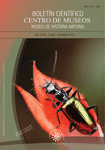Authors
Abstract
The diversity of diurnal butterflies and their relationship with the guamo, Inga ornata, reproductive phenology in a forest shepherding agroecosystem in Quindío, Colombia was studied. Monthly samples of two transects of 50 x 2 m were carried out using entomological nets, traps baited with decomposed fruit and direct observations of l. ornate visiting butterflies were performed. The number of l. ornate flowers and fruits available in these transects was also counted monthly. A total of 142 butterfly species was recorded, 116 in pastures and 59 associated with I. ornata trees. A higer representation of the nectar feeding guild was found in the area of study. The richness, abundance and diversity of butterflies showed a tendency to increase during the months with higher availability of flowers and fruits, but there was not a significant correlation between these variables. The results of this study highlight the importance of I. ornata as a food resource for adult butterflies, especially for nectar feeding guild.
References
ALZATE, H., 1994. Patrimonio y deterioro ambiental. Informe del estado de los recursos naturales y medio ambiente en el Valle del Cauca. Contraloría del Valle, División de Recursos Naturales y Medio Ambiente, Cali, Colombia. 136p.
BECCALONI, G.W., 1997. Vertical stratification of Ithomiine (Nymphalidae: Ithomiinae) mimicry complexes: the relationship between adult flight height and larval host-plant height. Biological Journal of the Linnean Society, 62: 313-341.
BECCALONI, G.W. & GASTON, K.J., 1995. Predicting the species richness of Neotropical forest butterflies: Ithominae (Lepidoptera: Nymphalidae) as indicators. Biological Conservation, 71: 77-86.
BECK, J., MÜHLENBERG, E. & FIEDLER, K., 1999. Mud-puddling behaviour in tropical butterflies. Tropical Lepidoptera, 6: 5-9.
BROWN, K.S.JR., 1984. Chemical ecology of dehydropyrrolizidine alkaloids in adult Ithomiinae (Lepidoptera: Nymphalidae). Rev. Bras. Biol., 44: 435-460.
________., 1996. Conservation of threatened species of Brazilian butterflies. International symposium on Butterfly Conservation III: 45-62. Japan.
BROWN, K.S.JR. & FREITAS, A.V., 2000. Atlantic forest butterflies: Indicators for landscape conservation. Biotropica, 32 (4b): 934-956.
DEVRIES, P.J., MURRAY, D. & LUNDE, R., 1997. Species diversity in vertical, horizontal and temporal dimensions of a fruit-feeding butterfly community in an Ecuatorian Rainforest. Biological Journal of the Linnean Society, 62: 313-341.
DEVRIES, P.J. & WALLA, T.R., 2001. Species diversity and community structure in Neotropical fruitfeeding butterflies. Biological Journal of the Linnean Society, 74: 1-15.
DRUMMOND III, B.A. & BROWN, K.S.JR., 1987. Ithomiinae (Lepidoptera: Nymphalidae): summary of known larval foodplants. Annals of Missouri Botanical Garden, 74: 341-358.
ETTER, A., 1998. Mapa general de ecosistemas de Colombia (1:11.500.000) (en) CHÁVEZ, M.E., ARANGO, N. (eds.) Informe Nacional sobre el Estado de la Biodiversidad. Vol. 3. Instituto Alexander von Humboldt, Programa de las Naciones Unidas para el Medio Ambiente y Ministerio de Medio Ambiente, Bogotá, Colombia.
FALCÃO, M.A. & CLEMENT, C.R., 2000. Fenologia e produtividade do ingá cipó (Inga edulis) na Amazônia Central. Acta Amazónica, 30 (2): 173-180.
FAGUA, G., 1996. Comunidades de mariposas y artropofauna asociada al suelo de tres tipos de vegetación de la serranía de Taraira (Vaupes, Colombia): Una prueba del uso de mariposas como bioindicadores. Revista Colombiana de Entomología, 22 (3): 143-151.
FARFÁN, V.F. & MESTRE, A.M., 2004. Manejo del sombrío y fertilización del café en la zona central Colombiana. Avances técnicos Cenicafé, 330: 1-8.
GARCÍA, R.C., ARMBRETCHT, I. & ULLOA-CHACÓN, P., 2001. Staphylinidae (Coleoptera): composición y mirmecofilia en bosques secos relictuales de Colombia. Folia Entomológica Mexicana, 40 (1): 1-10.
GARCÍA, C., CONSTANTINO, L.M., HEREDIA, M.D. & KATTAN, G., 2002. Mariposas Comunes de la Cordillera Central de Colombia. Wildlife conservation society. Cali, Colombia.
HALL, J.P. & WILLMOTT, K.R., 2000. Patterns of feeding behaviour in adult male riodinid butterflies and their relationship to morphology and ecology. Biological Journal of the Linnean Society, 69: 1-23.
HAMER, K.C., HILL, J.K., BENEDICK, S., MUSTAFFA, N., CHEY, V.K. & MARYATI, M., 2006. Diversity and ecology of carrion and fruit-feeding butterflies in Bornean rain forest. Journal of Tropical Ecology, 22: 25-35.
HERNÁNDEZ, B., MAES, J.M., HARVEY, C.A., VÍLCHEZ, S., MEDINA, A. & SÁNCHEZ, D., 2003. Abundancia y diversidad de escarabajos coprófagos y mariposas diurnas en un paisaje ganadero en el departamento de Rivas, Nicaragua. Agroforestería en las Américas, 10 (39-40): 1-10.
HORNER, M.C., DAILY, G.C., EHRLICH, P.R. & BOGGS, C.L., 2003. Countryside Biogeography of Tropical Butterflies. Conservation Biology, 17 (1): 168-177.
KOPTUR, S., 1983. Flowering phenology and floral biology of Inga (Fabaceae: Mimosoideae). Systematic Botany, 8 (4): 354-368.
MALLET, J. & GILBERT, L.E., 1995. Why are there so many mimicry rings? Correlations between habitat, behavior and mimicry in Heliconius butterflies. Biological Journal of the Linnean Society, 55: 159-180.
PENNINGTON, T.D., 1997. The genus Inga Botany. The Royal Botanical Gardens. London, England. 490p.
RAY, T.S. & ANDREWS, C.C., 1980. Antbutterflies: butterflies that follow army ants to feed on ant-bird droppings. Science, 210: 1147-1148.
STATSOFT, INC., 1998. Statistica for Windows. Tulsa. http://www.statsoft.com
TRIGO, J.R., BROWN, K.S.JR., SILVANA, A.H. & SOARES, L.E., 1996. Qualitative patterns of pyrrolizidine alkaloids in Ithomiinae butterflies. Biochemical Systematics and Ecology, 24 (3): 181-188.
VALENCIA, C.A., GIL, Z.N. & CONSTANTINO, L.M., 2005. Mariposas diurnas de la zona central cafetera de Colombia. Guía de Campo. Cenicafé, Chinchiná, Colombia. 244p.

 PDF (Español)
PDF (Español)
 FLIP
FLIP


















